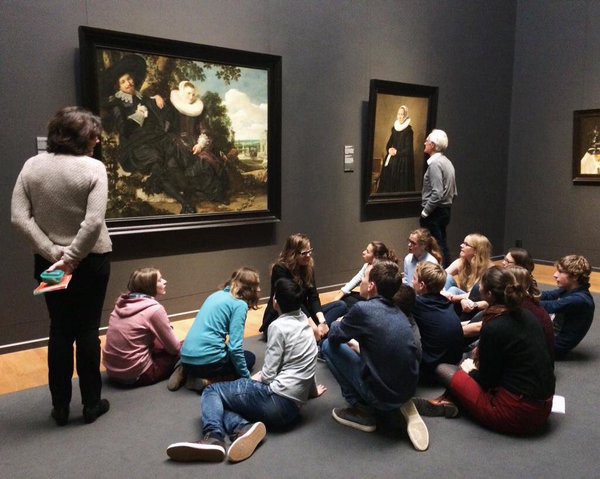“Today’s youth” – the problem with first impressions!
This picture hit the internet in 2014; with corresponding comments on what the viewers thought they recognized at first. Now this picture is making the rounds again.
It shows a group of young people sitting on a visitor's sofa in front of the painting "The Night Watch" by Rembrandt, which hangs in the Rijksmuseum in Amsterdam, and staring at their smartphones.
Take a look at this picture and think for a moment about what is going through your head.
What kind of impression is conveyed, and above all: If this were a Facebook post, what would you probably comment on there?
Would it perhaps be something along these lines?
“Smartphones are dumbing down our children!” – “There they are sitting in front of a Baroque masterpiece, and what are they doing? Playing with your cell phone!” – “That’s what’s wrong with our society!” – “Just sad, no sense of culture anymore…” – “The death of civilization!”
It's easy to get upset about something.
Honestly, that's exactly how social media works: appealing to emotions. You see a picture and react from your gut. A sweet kitten – Like! A meme that highlights grievances and underlines this with an emotional image - Like! Yes, you have exactly this opinion and leave a “like”. You comment, agree with each other in the comments and feel good afterwards. You throw your opinion into the pot, which scrolls past you invitingly in the news feed.
In principle there is nothing objectionable about it. That's just how Facebook & Co work, and to be honest, there are enough topics that are worth drawing attention to in this way, for example.
But let's stick with this picture
Here is a second picture showing the same group of children a few minutes earlier.
Shortly before...
Now what is the first impression that is conveyed? What would you comment under this picture? Would you comment at all? Is the message of the picture enough to “motivate” you enough?
After all, if you see it in contrast to the perceived message of the first picture, this is a comparatively positive picture: It shows that today's youth also show an interest in art, culture and history. A fact that is often denied all too quickly.
Is it perhaps the case that one is more inclined to denounce something negative, to be upset about something or to complain about something? Is “bad news” the only “good news” because otherwise the outrage machine won’t start?
But what about the smartphones in the picture?
The Rijksmuseum in Amsterdam offers a smartphone app as a museum guide, where, in addition to the exhibits, background information, documentation, interactive learning games and various quizzes on the respective topics are offered. Basically a digital catalog that conveys much more than a paper booklet. The fact that the children in the picture are busy with their smartphones is absolutely intentional and even very positive.
The question is whether this picture would have caused such a storm of discontent and indignation if the children had had a leaflet or brochure in their hands.
The association of smartphones with entertainment, games, distraction, isolation from the outside world, or “smombies” in modern German, is not always correct.
The generation of “digital natives” in particular is actually predestined to use technology in the context of learning. And that is certainly welcome. Unfortunately, as you can see, this hasn't really caught on with other generations.
The only sad thing is that this message with the correction will not be nearly as viral as the original post of the picture that was posted online without comment, which received so many prejudiced comments.
José Picardo concludes in his article on medium.com with the question of what is more likely to be the “death of civilization”: children using smartphone apps to learn about art or the willful ignorance of adults who are too are quick to jump to conclusions.
The first impression is not always the right one. One more reason not to share or comment on everything straight away, but to question things.
Author: Rüdiger Reinhardt
Sources:
Notes:
1) This content reflects the current state of affairs at the time of publication. The reproduction of individual images, screenshots, embeds or video sequences serves to discuss the topic. 2) Individual contributions were created through the use of machine assistance and were carefully checked by the Mimikama editorial team before publication. ( Reason )



